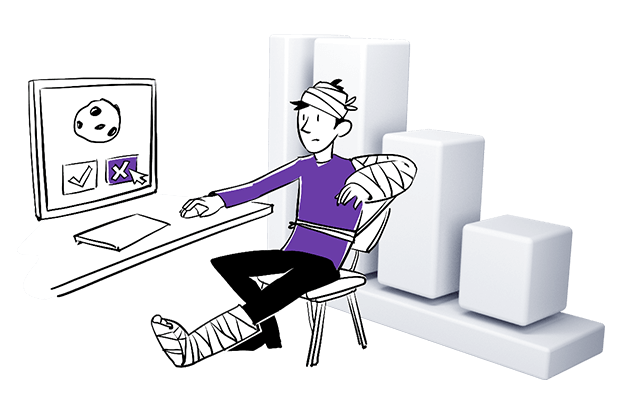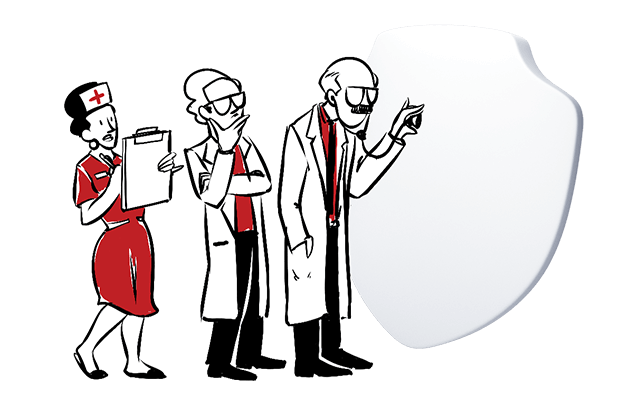Maciej Zawadziński: What do modern patients expect from their healthcare providers? How did digitization change patients’ expectations?
Tomasz Domino, COO at Infermedica: Today’s technology is facilitating more accessible and personalized healthcare for patients, and consumerization of healthcare is becoming a fact. Patients expect increased access to additional care services, better customer service, greater flexibility for appointment booking. What’s more, they want the ability to access services remotely instead of going for in-person service visits, such as trading regular GP consultations for in-home lab tests. New technologies and patient expectations create space for disruptive startups and put pressure on traditional healthcare providers and health insurers that need to adapt offerings to keep up with the market. Of course, the Covid-19 pandemic has accelerated this process significantly.
It became apparent that digital transformation is a critical tool for addressing the most significant challenges in healthcare today, both in the private and public sector.
– Tomasz Domino
Maciej Zawadziński: Generally, how is digitization going in healthcare? What progress in the area of digitization has been made and what still needs to be addressed?
Tomasz Domino: It is said that the healthcare industry is 10 years behind other industries when it comes to implementing innovations and modern technologies. There is a lot of truth in this. This is mainly because of the complex regulatory environment related to developing medical solutions and the need for thorough and reliable clinical validation, both time-consuming and costly.
However, it became apparent that digital transformation is a critical tool for addressing the most significant challenges in healthcare today, both in the private and public sector. For instance, telemedicine consultation has become a standard channel of communication with doctors. Moreover, AI-based solutions receive the United States Food and Drug Administration (FDA) certification, in particular in radiology, but other solutions are getting there too. Think of medical applications that are prescribed by doctors as part of a treatment plan, as are drugs, and the state reimburses their cost, that’s the case with the Digital Health Applications Ordinance (DiGAV) passed in Germany.
The fundamental problem still exists or is even getting worse, that is unequal access to healthcare or its complete absence in some regions. The only remedy, in my opinion, are the breakthrough technologies that automate patient service processes and AI-based solutions.

You might also like:
Health data and GDPR: best practices for analytics in the EU
Maciej Zawadziński: Can you name countries or organizations that made the biggest progress in healthcare digitization?
Tomasz Domino: We don’t have to look far. In Estonia, around 99% of the data generated by hospitals and doctors have been digitized, and citizens can access their medical records, e-prescriptions and find the most appropriate health services and providers. Patients can take their medical data with them even if they travel abroad.
Moreover, the country decided to step into more preventive healthcare and offered free gene tests to detect which people are in high-risk groups for certain diseases. Around 20% of citizens already did the test, which will enable healthcare providers to offer personalized, preventive care and services in the future.
Maciej Zawadziński: What areas of healthcare are being digitized? Compared to their analog versions, how are they changed by digitization?
Tomasz Domino: First of all, the aforementioned medical documentation, such as paper files are replaced by the electronic health records, which can be transferred, analyzed, and that enable remote management of the treatment process.
Telemedicine became mainstream and widespread. It helped people living in some rural regions access medical care, unloaded queues in medical facilities, and decreased the waiting time for medical appointments.
There are also more medical devices for personal use that allow you to conduct a physical examination yourself, e.g., electronic stethoscopes or smart bands with ECG. Widespread use of these types of devices lets us take more responsibility and control over our own health.
Data is king, also in healthcare. We can look through a gazillion pieces of health data and even more of it we can store and analyze.
– Tomasz Domino
Maciej Zawadziński: What new healthcare services were created thanks to digitization? What new technologies were employed to realize them?
Tomasz Domino: I would highlight three areas:
Telemedicine services. The pandemic unleashed the potential of telemedicine and made it possible for many people to experience the ease and convenience of remote consultations. It has also accelerated advances in care for patients with chronic diseases,expanding the spectrum of medical and peri-health services that can be accessed remotely, from dietary consultations to seeing a psychologist.
Self-monitoring medical devices and apps. We are already seeing, and will continue to see, more home devices that allow for remote health monitoring or support the initial medical diagnoses that patients can do themselves.
Solutions based on AI. The potential to simplify the lives of patients, doctors, and hospital administrators by performing tasks that humans usually do, but in less time and at a fraction of the cost. We are already seeing widespread use of AI in diagnostic imaging, new drug research, genomics, or virtual patient and physician assistants. Importantly, AI will not replace physicians, but it will make their work more efficient and satisfying.
Maciej Zawadziński: In data-driven organizations can collect data about user behavior across websites, apps and online products to further optimize them. Does this apply to healthcare as well? Is the data-driven mindset strong in healthcare organizations?
Tomasz Domino: Data is king, also in healthcare. We can look through a gazillion pieces of health data and even more of it we can store and analyze. Starting from our vital signs and symptoms, through medications, family medical history, and all the way to genotype. There’s no single square centimeter of the human body or activity we can’t somehow quantify and analyze to provide better care outcomes or suggest some preventive actions.
The challenge is not only how to interpret data, but also how to collect, store and process it securely. There are many risks related to medical data leakage, so investing in solutions and architecture to ensure safety of our medical information is crucial.

You might also like:
Is Google Analytics HIPAA-compliant?
Tomasz Domino
Operational & strategic leader with over 10 years of consulting and startup experience. Passionate about technology, especially digital health solutions and their groundbreaking impact on our lives. Tomasz is serving as the Chief Operating Officer at Infermedica, a leading digital health company specialized in AI-powered solutions for preliminary diagnosis and patient triage.









